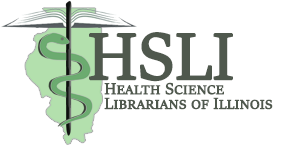The Information Policy & Access Center has released its Digital Inclusion Survey, which was compiled last year. The survey acknowledges the crucial role that public libraries play in providing access to digital resources, particularly to members of the community who would otherwise be cut off from the online environment. The study was intended not just to record the technology infrastructure that libraries possess, but to note the ways in which outreach efforts by libraries are improving the quality of life for underserved communities. These efforts are critical, as simply providing members of the public with digital access does not ensure understanding of those resources, including the most effective ways to navigate them in order to complete a key task, such a submitting a job application online. Through documenting the ways in which public libraries improve digital literacy and help close the ”
The Information Policy & Access Center has released its Digital Inclusion Survey, which was compiled last year. The survey acknowledges the crucial role that public libraries play in providing access to digital resources, particularly to members of the community who would otherwise be cut off from the online environment. The study was intended not just to record the technology infrastructure that libraries possess, but to note the ways in which outreach efforts by libraries are improving the quality of life for underserved communities. These efforts are critical, as simply providing members of the public with digital access does not ensure understanding of those resources, including the most effective ways to navigate them in order to complete a key task, such a submitting a job application online. Through documenting the ways in which public libraries improve digital literacy and help close the “Digital Divide”, the study also reinforces the efforts of libraries to meet the ever-changing needs of their users and that libraries are no longer merely repositories for print materials, even though that is still a key service.
One area that the study covers is health literacy. The following key findings emerge.
- A substantial number of public libraries provide some types of health and wellness resources. 56.2 percent provide access to subscription databases. 59.4 percent provide resources on health insurance, including the Affordable Care Act (ACA).
- That having been said, significant differences exist between urban and rural public libraries in the health-information services they provide. City libraries’ budgets are larger (even if they may be somewhat smaller on a per-capita basis), and they serve more people.
- Libraries in urban areas (74.5 percent) are far more likely to offer access to subscription databases, such as EBSCO Consumer Health Complete and Gale Health & Wellness Center, than are libraries in rural regions (39.8 percent).
- Similarly, public libraries in urban areas (48.9 percent) are far more likely to have STEAM programming than are libraries in rural regions (19.7 percent).
- In providing health-insurance information, including resources on ACA, city libraries do so at a 76.8-percent level, whereas rural libraries do so at only a 46.0-percent level.
- Disparities also exist between public libraries that were renovated in the last five years and those that were last renovated longer ago. It is not clear what the exact cause is more available space, greater funding resources, or a combination of the two.
- 48.1 percent offer STEAM (Science, Technology, Engineering, Arts, and Math) programming; the number falls to 30.6 percent among libraries that have not been renovated recently.
- 22.1 percent hold maker-space events related to STEAM; the number is 13.1 percent for other libraries.
- 70.6 percent have services to assist patrons with locating free health information; the percentage declines to 54.6 for libraries that have not been updated recently.
- 67.0 percent provide access to subscription databases on health-related topics; the number falls to 53.9 percent for other libraries
- 71.1 percent help patrons find health-insurance resources; this applies to only 56.8 percent of other libraries.
- 53.6 percent educate users in particular areas of health and wellness; this is true of only 46.4 percent of libraries that have been renovated less recently.
- The vast majority (91.9 percent) of public libraries that offer STEAM activities do so through formal programming.
For more information on the Digital Inclusion Survey, go here.
